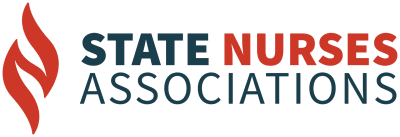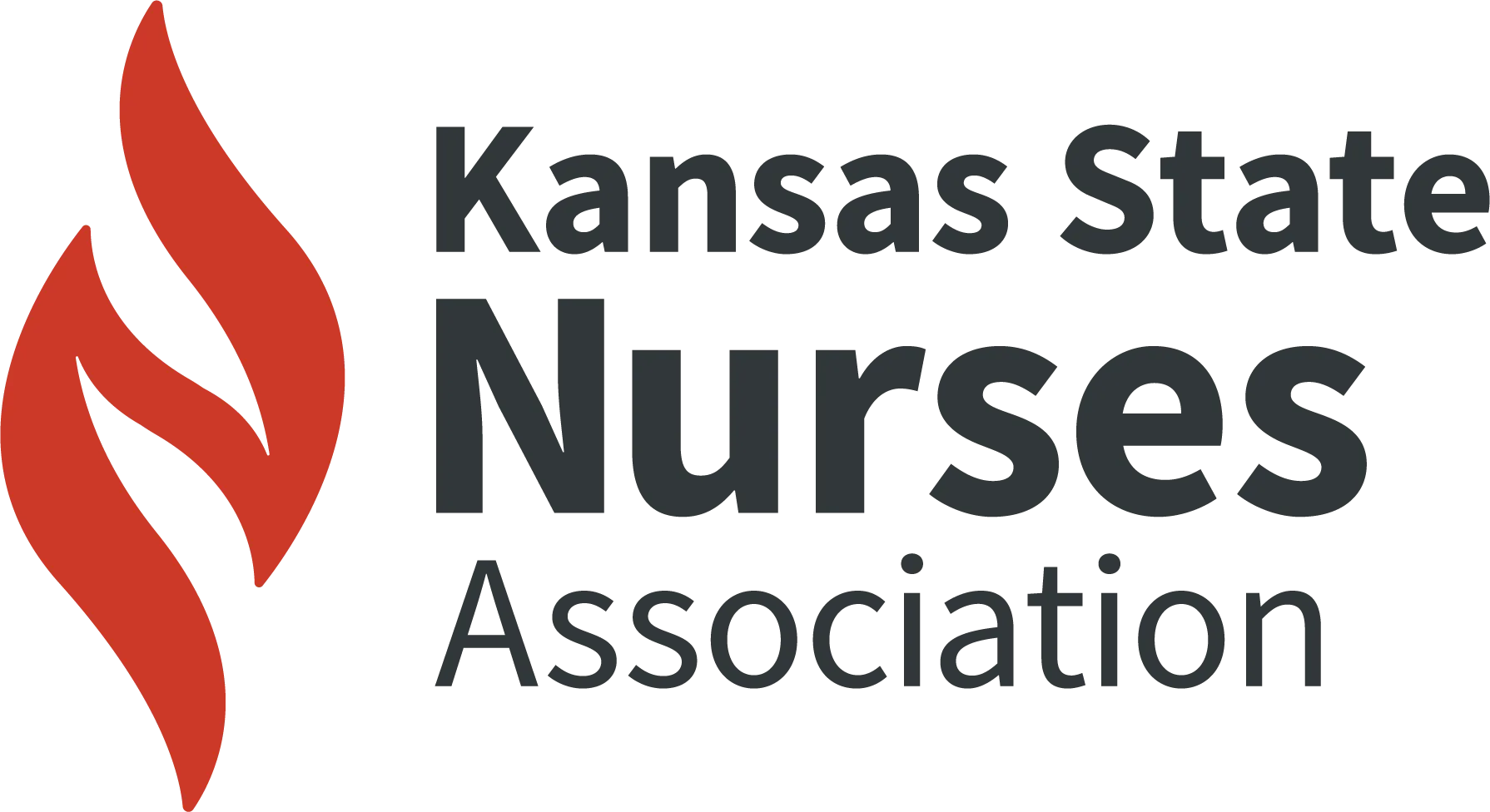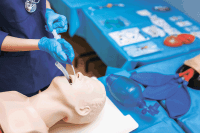SUDDEN INFANT Death Syndrome (SIDS) is the leading neonatal cause of death for infants between one month and one year old. Approximately 4,000 infants annually die from unknown causes in our country. Preventing SIDS risks is an important priority for public health. Even with 25 years of consistent “back-to-sleep” teaching programs, the rate of SIDS is unacceptably high (Zondo et al., 2017). If education on safe sleep has been consistent but not fully effective, perhaps the problem is not just sleep positioning.
Links between selenium deficiency and SIDS have been researched for 50 years. It has been recognized to be the basis for SIDS (Sobolev, et al., 2020). During pregnancy, a deficiency of selenium can result in a wide variety of problems, including SIDS. After birth, if a selenium deficiency continues, it can result in SIDS (Wallach, et al., 2014). New research found elevated levels of Butyryl-cholinesterase in those with SIDS (Harrington, et al., 2022). Kumar and associates (2020) showed this enzyme is related to having insufficient selenium levels.
SIDS affects many layers of our society: the individual who dies, their family who spent about nine months preparing for their arrival, and their providers. More abstractly, how the infant could have impacted various areas of society is also lost. The current unknown aspect of SIDS makes it hard for parents and providers to know how to make sure their own beloved child or patient is not lost. Fear has affected parents as evidenced by 47,000 devices that have increased ER visits, but not decreased SIDS (Stiefel, 2021).
Using selenium to prevent SIDS is also helping in solving how to respond to cultural differences in families who are resistant to the “back to sleep” program, especially in low income and African American populations that have high rates for SIDS. They found non-compliance to supine sleeping due to receiving advice from older relatives using old recommendations and concerns about child comfort and choking risk while supine (Zondo et al., 2017).
After the FDA increased selenium requirements for infant formula (FDA, 2013), the SIDS rate dropped (USDHHS, ODPHP, 2020). However, formula is partially effective. Breastmilk is best since it helps term and premature infants to develop immunity. Selenium in mother’s milk depends on maternal intake (Kumar & Lukman, 2019).
NPs can order Erythrocyte Selenium at preconception or first OB visits since it reveals three months of selenium intake (Skröder et al., 2017), similar to an A1C. This will fit the OB clinic flow. NPs can order urine selenium levels on moms during regular OB visits, while mom is exclusively breastfeeding, and on infants when they are not exclusively breastfeeding during their first year of well child checks. Urine collection is a common method of assessment, and is a cost-effective way to measure current selenium levels (Phiria, et al., 2020). Both NP and RN’s can watch levels and communicate results for modification PRN.
According to Kipp, et al. (2015), the concentration of selenium in plasma begins to reach the lower level of glutathione peroxidase activity at 90 mcg/l, and is optimum at 100-120 mcg/l. They discovered that this takes about 1 g of selenium per kilogram of body weight. They found women reach ideal levels with a daily selenium intake of 60 mcg, 62 mcg when pregnant and 75 mcg when lactating. For infants under four months, the daily intake of selenium is 10 mcg and slightly increases to 15 mcg for the rest of their first year. The limit set by our government is 45 mcg for under four months, 60 mcg until one year and 400 mcg for all adults (USDHHS, NIH, 2021b).
To keep the intake balanced, nursing staff can supply pre-conception and OB patients a brochure of selenium rich foods. One ounce, or six to eight Brazil nuts have about 544 mcg of selenium! So just one nut would meet the daily requirement. This might be perfect for the nauseous mom who can’t eat much. The full ounce would exceed the limit. Three ounces of tuna gives approximately 94 mcg of selenium. Then it drops significantly, three ounces of halibut, sardines, ham, and shrimp provide about 40-47 mcg selenium (USDHHS, NIH, 2021a). The brochures can easily show more options. Keep in mind soil concentrations of selenium affects plants, animals, human intake, mineral status and children’s health, such as SIDS (Bevis, 2015).
Parental surveys or questionnaires, regarding how parents feel about this approach can be utilized at the beginning and end of the program. Qualified nurses on the team can collect, process and publish the data: survey results, selenium levels, frequency of SIDS, and other diseases due to selenium deficiency such as: infertility, miscarriage, low birth weight, infant mortality, slow growth, small size, anemia, hypothyroidism, postpartum thyroid disease, autoimmune disease, chronic fatigue, muscular weakness, muscular dystrophy, multiple sclerosis, myalgia, muscle tenderness, fibromyalgia, cystic fibrosis, ALS, neuromuscular disease, scoliosis, hypertrophic cardiomyopathy, liver cirrhosis, lupus, Parkinson’s, dementia, decreased immune function and cancer (Wallach, et al., 2014 & Schomburg, 2021).
The initial impact anticipated is selenium levels in normal range resulting in decreased outcomes of: SIDS rates, grief, loss and anxiety. It is anticipated to have increased outcomes of: more living children participating in society, happy families, relief from families resistant to sleep patterns, that they can still participate in decreasing their child’s risk of death.
Future impact potential of this plan includes printed results of this research, a metanalysis from the over 50 years of selenium and SIDS research, new articles written in professional specialties (OB, L&D, pediatrics, midwives and lactation consultants) leading to changed guidelines for prenatal care and SIDS. CEU’s for current providers and infiltrate both nursing and medical books and schools for future providers.
Health insurance may modify coverage or cost of labs and may consider covering supplements. The ICD system could change. Regarding SIDS, add different levels of risk before death occurs. For selenium, it would be helpful to add a code for those at risk for deficiency/toxicity, especially those of childbearing age or actively breastfeeding. Infants at highest risk for SIDS are born to teens from the American Indians, Alaskans and African Americans ethnic groups (Deware-Jones, 2021). Therefore, school nurses can teach teens about selenium. WIC needs to update their food list to include Brazil nuts (California WIC, 2019). More Brazil nuts eaten may impact farmers and sellers. Government education like “My Plate” may emphasize selenium rich foods. It may exceed the Healthy People 2030 goal MICH 02 to reduce the rate of infant deaths to 5.0 (USDHHS ODPHP, 2023). Selenium could become required in prenatal vitamins.
As selenium intake increases, the results of proper selenium levels are anticipated to affect other selenium deficiency diseases, as previously mentioned. There is a potential to also impact the food industry to be sure to evaluate soil and animal feed for selenium. Selenium awareness could sweep the nation (and world) like folate, motivating providers and the public to attend to their selenium intake. It is past time to implement this research into clinical practice to significantly intervene with the death rates of our vulnerable infants, who are dependent upon adults for their safety.
U.S. Department of Health and Human Services, National Institute of Health [USDHHS, NIH]. (2021). Selenium: Fact sheet for health professionals.
https://ods.od.nih.gov/factsheets/Selenium-HealthProfessional/
Photo: Rootd. (2019). 10 Best Food Sources Of Selenium & Why We Need It. https://rootd.com/blogs/vitamins-minerals-101/selenium
References
Bevis, L. E. M. (2015). Soil-to-human mineral transmission with an emphasis on zinc, selenium and iodine. Springer Science Reviews, 3, 77-95. doi: 10.1007/s40362-014-0026-y
California WIC. (2019). Authorized food list shopping guide. https://www.myfamily.wic.ca.gov/Content/Documents/ShoppingGuide-EN-ADA-4.19%20rev%205.19%20FINAL.pdf
Deware-Jones, L. (2021). Evaluation of a clinical practice guideline [Unpublished manuscript]. United States University, San Diego.
Food and Drug Administration [FDA]. (2013). Infant formula: The addition of minimum and maximum levels of selenium to infant formula and related labeling requirements. https://www.federalregister.gov/documents/2013/04/16/2013-08855/infant-formula-theaddition-of-minimum-and-maximum-levels-of-selenium-to-infant-formula-and-related
Harrington, C. T., Naz-AlHafid, K., & Waters, A. (2022). Butyrylcholinesterase is a potential biomarker for Sudden Infant Death Syndrome. eBioMedicine: Part of the Lancet Discovery Science, 80. https://www.sciencedirect.com/science/article/pii/S2352396422002225
Kipp, A.P., Strohm, D., Brigelius-Flohe, R., Schomburg, L., Bechthold, A., Leschik-Bonnet, E., Heseker, H., & German Nutrition Society (DGE). (2015). Revised reference values for selenium intake. Journal of Trace Elements in Medicine and Biology. 32: 195-199. https://doi.org/10.1016/j.jtemb.2015.07.005
Kumar, N., Gupta, S. K., Chandan, N. K., Bhushan, S., Singh, D. K., Kumar, P., Prem Kumar, P., Wakchaure, G. C., & Singh, N. P. (2020). Mitigation potential of selenium nanoparticles and riboflavin against arsenic and elevated temperature stress in Pangasianodon hypophthalmus. Scientific Reports 10. https://doi.org/10.1038/s41598-020-74911-2
Kumar, A. P., & Lukman, S. (2019). Dual benefits, compositions, recommended storage, and intake duration of mother’s milk. International Journal of Caring Sciences, 12(3), 1913-1925. https://search.proquest.com/docview/2363844933?accountid=100141
Phiria, F. P., Anderc, E. L., Larka, R. M., Baileya, E. H., Chilimad, B., Gondwed, J., Joye, E. J. M., Kalimbiraf, A. A., Phukag, J. C., Suchdevh, P. S., Middletoni, D. R. S., Hamiltonc, E. M., Wattsc, M. J., Younga, S. D., & Broadleya, M. R. (2020). Urine selenium concentration is a useful biomarker for assessing population.
Environment International 134 105218. https://reader.elsevier.com/reader/sd/pii/S0160412019323268?token=C5EBE9F1C5CB2721DF6EABD71BEEB797DEAAE01ACC45228FD27CDBDB6CCDD0ABF29CC1FD A30D4FB178718161B10C9A01&originRegion=us-east-1&originCreation=20220607051544
Schomburg, L. (2021). Selenium deficiency due to diet, pregnancy, severe illness, or COVID-19—A preventable trigger for autoimmune disease. International Journal of Molecular. Science. 22(16), 8532; https://www.mdpi.com/1422-0067/22/16/8532
Skröder, H., Kippler, M., Tofail, F., & Vahter, M. (2017). Early-life selenium status and cognitive function at 5 and 10 years of age in Bangladeshi children. Environmental Health Perspectives (Online), 125(11). http://dx.doi.org/10.1289/EHP1691
Sobolev, O. I., Gutyj, B. V., Sobolieva, S. V., Borshch, O. O., Nedashkivsky, V. M., Kachan, L. M., Karkach, P. M., Nedashkivska, N. V., Poroshinska, O. A., Stovbetska, L. S., Emelyanenko, A. A., Shmayun, S. S., & Guta, Z. A. (2020). Selenium in natural environment and food chains: A review. Ukrainian Journal of Ecology, 10(4), 148-158, doi: 10.15421/2020_182. https://www.researchgate.net/publication/347412980_Selenium_in_natural_environment_and_food_chains_A_Review
Stiefel, A. (2021). At-home cardiorespiratory monitors for newborns: Helping or hurting parents’ peace of mind. Pediatric Nursing, 47(1), 11–16. https://searchworks-lb.stanford.edu/articles/aph__148820876
U.S. Department of Health and Human Services, National Institute of Health [USDHHS, NIH]. (2021a). Selenium: Fact sheet for health professionals. https://ods.od.nih.gov/factsheets/Selenium-HealthProfessional/
U.S. Department of Health and Human Services, National Institute of Health [USDHHS, NIH]. (2021b). Selenium: Fact sheet for consumers. https://ods.od.nih.gov/factsheets/Selenium-Consumer/
US Department of Health and Human Services, Office of Disease Prevention and Health Promotion [USDHHS, ODPHP]. (2023). Reduce the rate of infant deaths — MICH-02. https://health.gov/healthypeople/objectives-and-data/browse-objectives/infants/reduce-rate-infant-deaths-mich-02
U.S. Department of Health and Human Services, Office of Disease Prevention and Health Promotion [USDHHS, ODPHP]. (2020). Infant deaths due to sudden infant death syndrome (per 1,000 live births, <1 year) by total. Healthy People 2020. https://www.healthypeople.gov/2020/data/Chart/4830?category=1&by=Total&fips=-1
Wallach, J. D., Lan, M., & Schrauzer, G. (2014). Epigenetics: The death of the genetic theory of disease transmission. New York: Select Books Inc.
Zundo, K., Richards, E. A., Ahmed, A. H., & Codington, J. A. (2017). Factors associated with parental compliance with supine infant sleep: An integrative review. Pediatric Nursing, 43(2), 83-91. https://search.proquest.com/docview/1909737270?accountid=100141

























